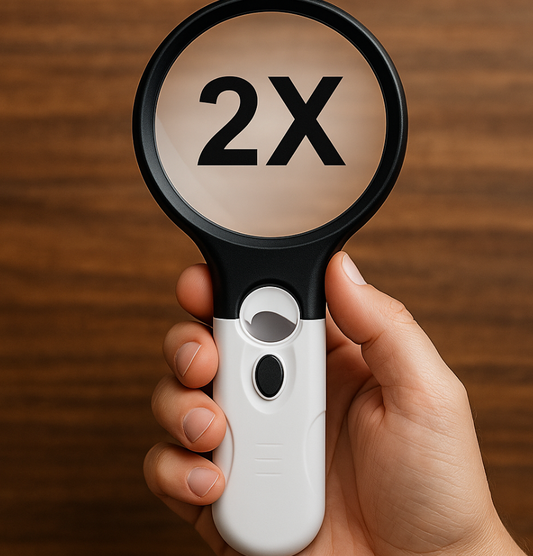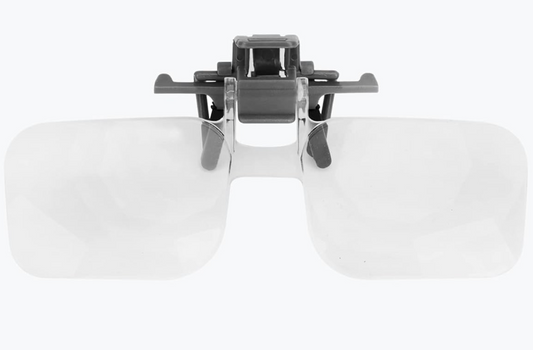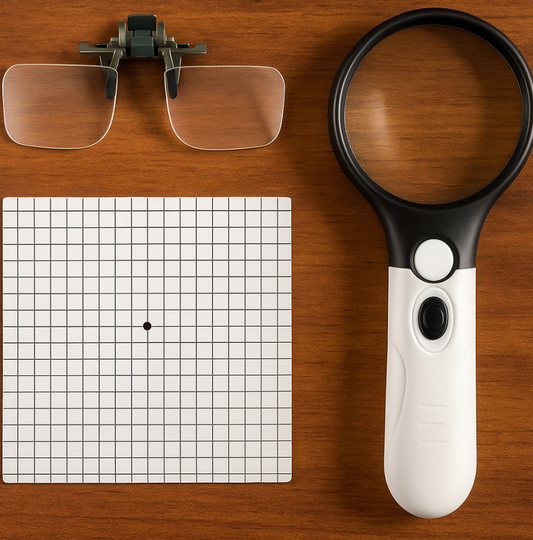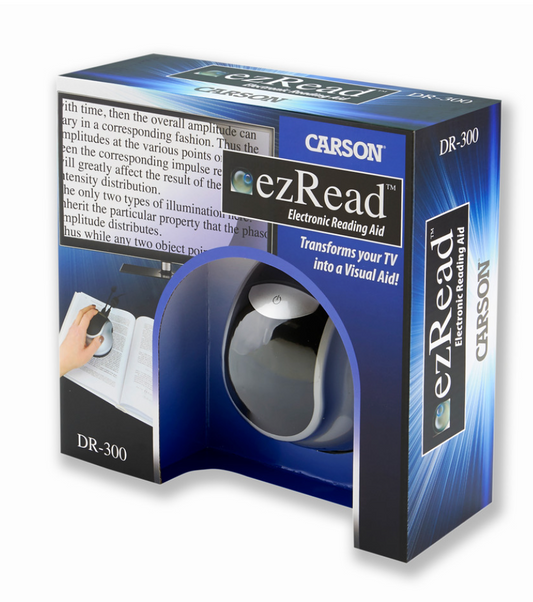Flashes, Floaters, and Flickering Lights: Understanding Visual Auras
Share
Visual auras are a fascinating yet sometimes concerning phenomenon experienced by many individuals. They often manifest as flickering lights, zigzag patterns, or shimmering spots that can appear in one’s field of vision. While visual auras are commonly associated with migraines, they can also occur without any type of headache.
This article explores the causes of visual auras, how they differ from retinal detachment, who is most affected, and what to do if you experience one.
What Are Visual Auras?
A visual aura is a temporary disturbance in vision that usually precedes a migraine headache but can also occur in isolation. Auras typically last between five minutes to an hour and can involve various visual distortions, including:
- Scintillating scotomas: Bright, flickering, or shimmering lights, often forming a crescent or jagged shape.
- Zigzag lines: Geometric, wave-like patterns that spread across the field of vision.
- Blurred vision: Areas of the vision that become hazy or difficult to focus on.
- Tunnel vision: A narrowing of the visual field.
- Temporary blindness: A short-lived loss of vision in one or both eyes.
Visual auras are caused by electrical or chemical changes in the brain, particularly in the visual cortex, which processes images. These disturbances, known as cortical spreading depression, create a wave of neuronal activity followed by inhibition, leading to the classic aura symptoms.
Causes of Visual Auras
1. Migraine with Aura
One of the most common causes of visual auras is a migraine with aura. This type of migraine affects about 25% of people who experience migraines. The aura serves as a warning sign that a headache may follow, though not all auras result in pain.
2. Ocular Migraines
Ocular migraines, also called retinal migraines, involve visual auras but typically affect only one eye. They can cause temporary vision loss or disturbances without the headache component of a migraine.
3. Seizures
In some cases, visual auras can be related to seizures, particularly occipital lobe epilepsy. These auras may appear as repetitive visual distortions or flashing lights.
4. Transient Ischemic Attacks (TIAs) or Strokes
A visual aura-like experience can sometimes be a warning sign of a stroke or a TIA. This typically occurs in older adults and may be accompanied by other neurological symptoms, such as weakness, slurred speech, or confusion. Typically vision will go black in one or both eyes for less than 30 seconds when a TIA or stroke may be about to occur.
5. Medication Side Effects
Certain medications, particularly those affecting blood circulation or brain activity, can induce visual auras.
How to Differentiate Between a Visual Aura and Retinal Detachment
Visual auras and retinal detachments can sometimes appear similar, but there are key differences that can help distinguish between the two.
Key Features of a Visual Aura:
- Bilateral occurrence: Auras usually affect both eyes, even if it seems like they are only affecting one.
- Temporary and transient: Auras typically last 5-60 minutes and resolve completely.
- Geometric or shimmering patterns: The vision disturbances often appear as zigzags, waves, or flashing lights that expand outward.
- No permanent vision loss: Once the aura resolves, normal vision returns.
Key Features of a Retinal Detachment:
- Unilateral occurrence: Retinal detachments usually affect only one eye.
- Persistent symptoms: Unlike auras, the symptoms of retinal detachment do not go away on their own.
- Dark curtain effect: Many people describe a shadow or curtain covering part of their vision.
- Flashes and floaters: Sudden onset of new floaters (dark spots or shapes) and flashes of light may indicate retinal detachment.
- Progressive vision loss: If left untreated, retinal detachment can lead to permanent blindness.
If you experience symptoms resembling retinal detachment or a visual aura for the first time, seek immediate medical attention, as early treatment can prevent significant vision loss.
Who Is Most Affected by Visual Auras?
Age Groups Most at Risk
- Young adults (15-50 years old): Migraine with aura is most commonly seen in people between the ages of 15 and 50, particularly women.
- Children and teenagers: Some children experience migraines with aura, though they may outgrow them with age.
- Older adults (over 50): Auras in older individuals should be carefully evaluated, as they may indicate other neurological conditions such as TIAs or strokes.
Gender Differences
- Women are more affected than men: Due to hormonal fluctuations, women experience migraines with aura more frequently, especially during menstruation, pregnancy, or menopause.
Genetic Factors
- Family history plays a role: If one or both parents have migraines with aura, their children are more likely to experience them as well.
What to Do If You Experience a Visual Aura
If you experience a visual aura, consider the following steps:
- Stay Calm: Visual auras are usually harmless and temporary.
- Rest in a Dark Room: If a migraine follows, resting in a quiet, dark space can help alleviate symptoms.
- Monitor Your Symptoms: If the aura lasts longer than an hour or is accompanied by other neurological symptoms (e.g., slurred speech, weakness), seek medical attention immediately.
- Seek Immediate Medical Care if Needed: If you suspect a retinal detachment, go to an eye specialist or emergency room immediately.
- Track Triggers: Keep a diary of what might trigger your auras, such as stress, certain foods, dehydration, or hormonal changes.
Visual auras, while often associated with migraines, can be caused by a range of neurological and ocular conditions. They are temporary and typically resolve without lasting damage. However, it is crucial to differentiate them from more serious conditions like retinal detachment, which requires urgent medical attention.
Always consult with your eye doctor when new symptoms appear or if you have any concerns with your vision



